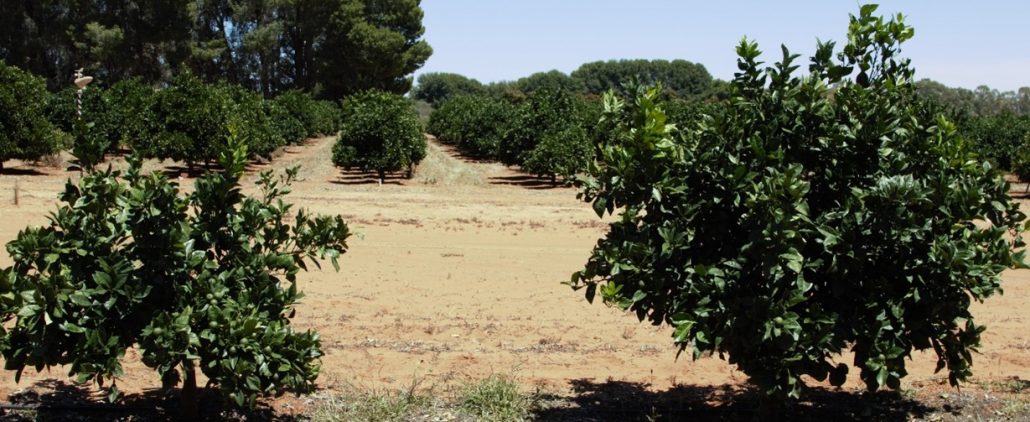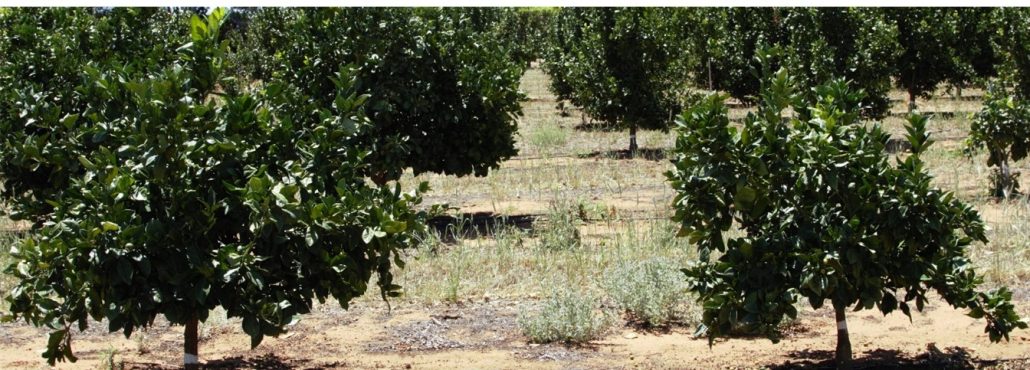11 July 2022
Potential dwarfing rootstocks ‘No. 24’ and ‘85-24’ for the citrus industry – an update
Potential dwarfing rootstocks ‘No. 24’ and ‘85-24’ for the citrus industry – an update
8 July 2022
Dr Tahir Khurshid
The Horticulture Innovation funded project ‘Evaluation of new rootstocks for the Australian Citrus Industry – CT17002’ is led by Dr Tahir Khurshid from the NSW Department of Primary Industries, Dareton Research Station. The project is focused on evaluating several overseas rootstocks budded to a range of mandarin and sweet orange varieties. The program is spread over five Australian states with 18 trials at grower’s properties and 4 trials at the Dareton Research Station. One of the components is evaluating the rootstocks for their dwarfing effect, which will potentially produce small trees for high-density planting systems for the citrus industry.
Size-controlling rootstocks have many benefits:
- they are important for high-density orchards, as these plantings crop earlier and produce high yields due to many trees per unit of land
- harvesting smaller trees is more economical than larger trees
- smaller trees can have more efficient use of fertilisers and chemical sprays
Therefore, growth control characteristics are being sought for most citrus breeding programs worldwide.
As well as controlling vigour, dwarfing rootstocks must also produce high yields with promising fruit quality and large fruit size. Evaluating any of these characteristics takes time, at least 7–8 years of commercial crops after planting, before any recommendations can be made on the suitability of any rootstock/variety combination.
Flying Dragon (Poncirus trifoliata) rootstock is commercially available for the citrus industry. With most scion varieties, mature trees on ‘Flying Dragon’ are normally about 2.5 m tall. However, this rootstock is very slow growing when grafted to navel oranges, taking a few years to produce a commercial crop and the yield is too low for too long, even if planted at higher densities.
Therefore, a size-controlling rootstock that is faster growing and produces greater yields than scions grafted to ‘Flying Dragon’ is needed. In September 2017, trials were established at the NSW DPI Dareton Research Station. Early maturing M7 navel and Tang Gold mandarin were grafted to C-54 and C-22 (from the US) and No. 24 and 85-24 (from China) using Tri22 and Flying Dragon as controls to find a superior rootstock with dwarfing tendency. Tree density is 800 trees/ha. The effect of these rootstocks on tree growth, yield and fruit quality is being evaluated in comparison to the Australian Standard, Tri22.
The results will indicate the potential performance of the rootstock/scion combinations under local conditions and in other Australian growing regions. Early data on tree growth are in Table 1.

Table 1. Tree height (m) and trunk diameter (mm) on 4 year old M7 Navels grafted to US and Chinese rootstocks. Values are the average of 14 trees.
Preliminary data suggest No. 24 and 85-24 (Chinese rootstocks) are having a dwarfing effect on tree growth and will be candidates for future high-density cropping systems. No. 24 displayed greater dwarfing than C-54 (Figure 1) and was slightly smaller than Tri22 (Figure 2). These rootstocks have strong potential in heavy soils and results on deep sandy loam soil are also very encouraging.
These trials are only 4 years old and evaluations will continue. Recommendations will be made to the industry after the conclusion of this project.

Figure 1: 4-year-old M7 navels growing on No. 24 (left -1.1 m) and C-54 (right -1.8 m) rootstocks at a density of 800 trees/ha at the NSW DPI Dareton Research Station.

Figure 2: 4-year-old M7 navels growing on Tri22 (left -1.6 m) and No. 24 (right -1.3 m) rootstocks at a density of 800 trees/ha at the NSW DPI Dareton Research Station.
Membership
You are not logged in
If you are not already a member, please show your support and join Citrus Australia today. Collectively we can make big things happen.
